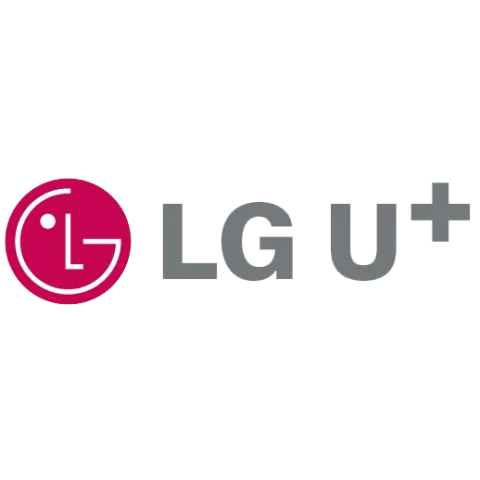
4G Network
LG U+ launched 4G LTE in July 2011 using a 10 MHz channel of B5 (850 MHz). A dual-carrier network was developed in July 2012 with the addition of B1 (2100 MHz), with LTE-A 2C carrier aggregation implemented July 2013 supporting DL rates up to 150 Mbps. Following the August 2013 auction, LG U+ secured an additional 40 MHz of 2600 MHz spectrum and implemented B7 (2600 MHz) in mid-2014, permitting peak data rates of up to 225 Mbps using 2C aggregation of the new band.
The company became the first South Korean operator to implement 3C aggregation (300 Mbps - CA_1A-5A-7A), deploying the feature nationally by July 2014. LTE-Advanced Pro was tested in November 2015 achieving 1.2 Gbps using both 4X4 MIMO and 256QAM technologies. LG U+ has also tested LTE-U LAA, 4C aggregation, and UL 2C CA.
LG U+ formed a partnership with KT and Huawei to begin deploying a joint national NB-IoT network shared between the two networks. The network was commercially launched July 2017 using a 200 kHz channel in the B3 (1800 MHz) band.
4G Frequency Bands
| Network Frequency Band | Max. Channel Bandwidth | Status |
|---|---|---|
|
10
|
Active
|
|
|
10
|
Active
|
|
|
20
|
Active
|
4G Network Events
| Date | Event | Subtype |
|---|---|---|
|
|
Launch of 4G Network
|
Launch
|
5G Network
The company has performed extensive 5G testing with its partner Huawei. The tests include a dual-band network comprising n78 (3500 MHz) and n257 (28 GHz), demonstrating peak data rates in excess of 20 Gbps. After securing 80 MHz of 3.5 GHz spectrum in the June 2018 auctions, along with 800 MHz of 28 GHz spectrum, LG U+ launched its 5G network in April 2019 over the n78 (3500 MHz) band. The initial network launch comprises over 10,000 Huawei 5G base stations.
5G Frequency Bands
| Network Frequency Band | Max. Channel Bandwidth | Status |
|---|---|---|
|
80
|
Active
|
|
|
400
|
Partial Use
|
5G Network Events
| Date | Event | Subtype |
|---|---|---|
|
|
Launch of 5G Network
|
Launch
|